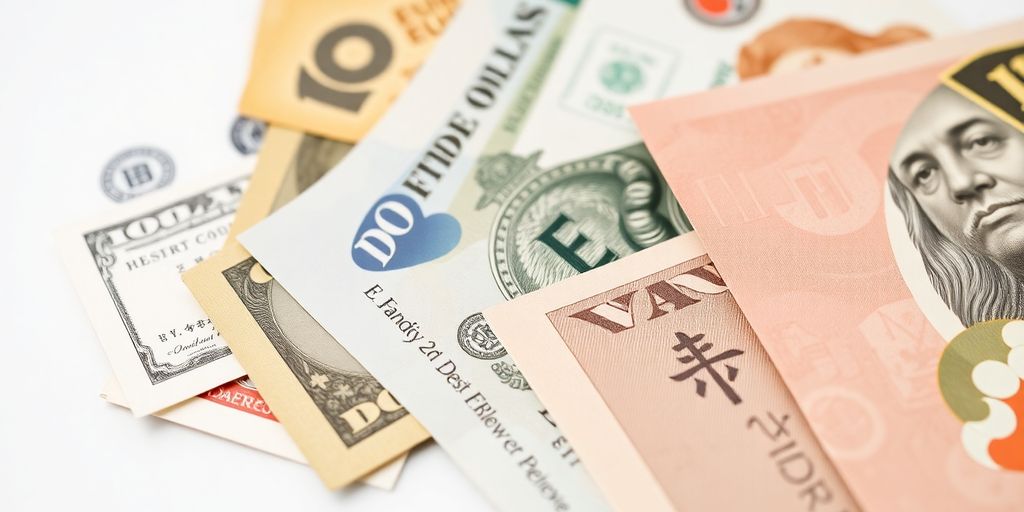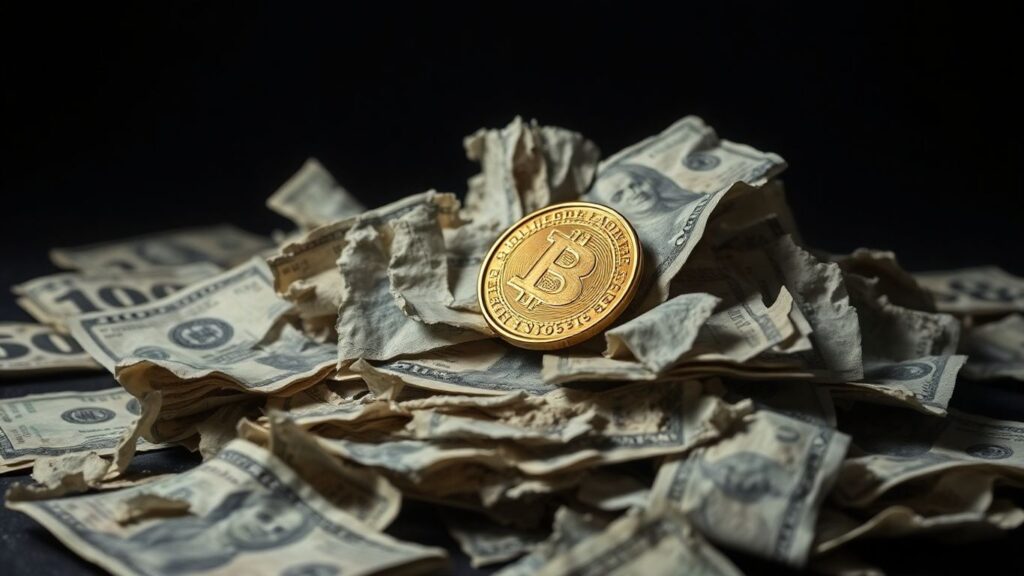Uptober, Q4, and Bitcoin’s Next Leg with Mark Moss

This episode of Coin Stories features a deep dive with Mark Moss, exploring the current market dynamics and the future of Bitcoin. We’re looking at the "reverse crash" phenomenon, where asset prices rise but the quality of life lags, and how Bitcoin is increasingly seen as a safe-haven asset.
Key Takeaways
- Q4 historically favors Bitcoin, with October often being a strong month, though November can be volatile.
- JP Morgan’s "debasement trade" highlights Bitcoin and gold as hard-money havens against currency devaluation.
- The concept of a "reverse crash" means assets are rising in price, but purchasing power is decreasing.
- Geopolitical shifts and the weaponization of the dollar are driving nations to seek alternatives like gold and potentially Bitcoin.
- The future of finance may involve stablecoins playing a role in U.S. debt markets, with potential inflationary implications.
- Individual empowerment through new tools and a shift in mindset is key to navigating the changing economic landscape.
Q4 Tailwinds: "Uptober" and Seasonality
October has a reputation for being a good month for Bitcoin, and Q4 in general tends to be a strong period. While the idea of four-year cycles in Bitcoin is popular, Mark Moss suggests it might be more tied to global liquidity cycles. Historically, the summer months can be slow, with activity picking up as people return to markets towards the end of the year. However, it’s important to note that November can be quite volatile, while December often finishes strong.
The "Debasement Trade" and Bitcoin as a Safe Haven
There’s a growing recognition of the "debasement trade," which involves moving assets into scarce, hard-money alternatives like Bitcoin and gold. JP Morgan recently highlighted this, suggesting Bitcoin’s fair value could be around $165,000. This marks a significant shift, as the bank now views Bitcoin as a risk-off asset, similar to gold. The core idea is that governments will continue to print money, devaluing existing currency, making hard assets a more attractive store of value. For Bitcoin to reach gold’s current market cap, it would represent a tenfold increase, suggesting significant undervaluation if it’s indeed seen as a comparable safe haven.
Understanding the "Reverse Crash"
Many people are still anticipating a traditional crash, where asset prices fall, leading to a decrease in their standard of living. Mark Moss, however, has been discussing a "reverse crash." This is where asset prices – like stocks, Bitcoin, gold, and even everyday goods like meat and milk – are all going up. While this might seem like prosperity, the result is the same: a decline in purchasing power and an inability to maintain the same quality of life as before. This inflationary crash is different from the deflationary crash of 2008, where asset prices plummeted. In a reverse crash, there’s no reset opportunity for those priced out; instead, people fall further behind.
The bubble, according to Moss, isn’t in stocks or homes, but in U.S. Treasuries and the U.S. dollar itself. When assets are viewed through the lens of a weakening dollar, their true value becomes clearer, showing a significant decline.
Fiat Maxis vs. Bitcoin Accumulators
There’s a distinction between traders focused on accumulating more dollars and those focused on accumulating more Bitcoin. A "fiat maxi" might trade Bitcoin, buying low and selling high to increase their dollar holdings. However, the goal for many in the Bitcoin community is to increase their Bitcoin stack. This strategy, while potentially profitable in dollars, doesn’t necessarily lead to more Bitcoin. For those looking to retire off Bitcoin, the focus should be on acquiring and holding the asset, rather than short-term trading.
Furthermore, the introduction of Bitcoin ETFs has significantly reduced volatility. While large drawdowns are still possible, the expectation of an 80% crash might be less likely now due to increased institutional demand and structural changes in the market.
Geopolitical Shifts and the Dollar’s Future
The global financial landscape is undergoing significant changes. Actions like the seizure of Russian bank accounts have made nations wary of the U.S. dollar’s weaponization. This has spurred efforts towards de-dollarization, with countries like Russia and China actively seeking alternatives. While BRICS nations have been moving towards gold, the U.S. is also employing strategies, such as promoting stablecoins, to maintain the dollar’s global standing. Stablecoin issuers are often required to buy U.S. Treasuries, creating demand for U.S. debt. This complex interplay of geopolitical moves and monetary policy suggests a potential shift in global financial power.
The "Uncommunist Manifesto" and Property Rights
Mark Moss discusses the rise of radicalization, often rooted in economic resentment. He argues that ideologies like Marxism, which aim to create division and foster a sense of deprivation, are counterproductive. The solution, he believes, lies in empowering individuals through the protection of private property rights. Bitcoin, in this context, represents a modern form of property rights, offering individuals hope for a better future by allowing them to build and preserve wealth.
He contrasts this with the industrial-era education system, which often leaves individuals ill-equipped for the current digital economy. While the traditional path may lead to debt and limited opportunities, the paradox is that it’s never been easier to make money using new tools and a different mindset. This creates two distinct economies: one for asset holders and those who adapt to new technologies, and another for those stuck in outdated models.
Retiring Off Bitcoin: A Five-Year Plan
For those concerned about Bitcoin’s price being too high to make a difference, Moss offers a message of hope. The key isn’t the absolute price, but the percentage of gain. He introduces the concept of a "five-year retirement plan" based on Bitcoin’s potential for high compound annual growth rates. By intelligently using debt to harvest appreciation, individuals can potentially build significant wealth in a shorter timeframe than traditional retirement plans allow. This strategy, historically available only to the ultra-wealthy, is now accessible to everyday people thanks to Bitcoin.
Corporate Treasuries and Long-Term Vision
Companies holding Bitcoin on their balance sheets, known as corporate treasuries, are a newer development. These entities often have a longer duration and can be more volatile than Bitcoin itself. While some have underperformed in the short term, Moss believes that those that intelligently use leverage will ultimately outperform Bitcoin. The key is to have a long-term perspective, as these ventures are akin to startups that require time to mature and build value. Investors should measure their portfolios in years, not quarters, to truly benefit from these opportunities.
The Power of Compounding
Compounding is a powerful force, not just in finance but in all aspects of life, from fitness to relationships. Understanding and applying this principle is crucial for success. Whether it’s building a business, creating content, or investing, consistent effort and growth lead to significant long-term results. Those who understand compounding benefit from it, while those who don’t often pay a price for their lack of foresight.







Responses